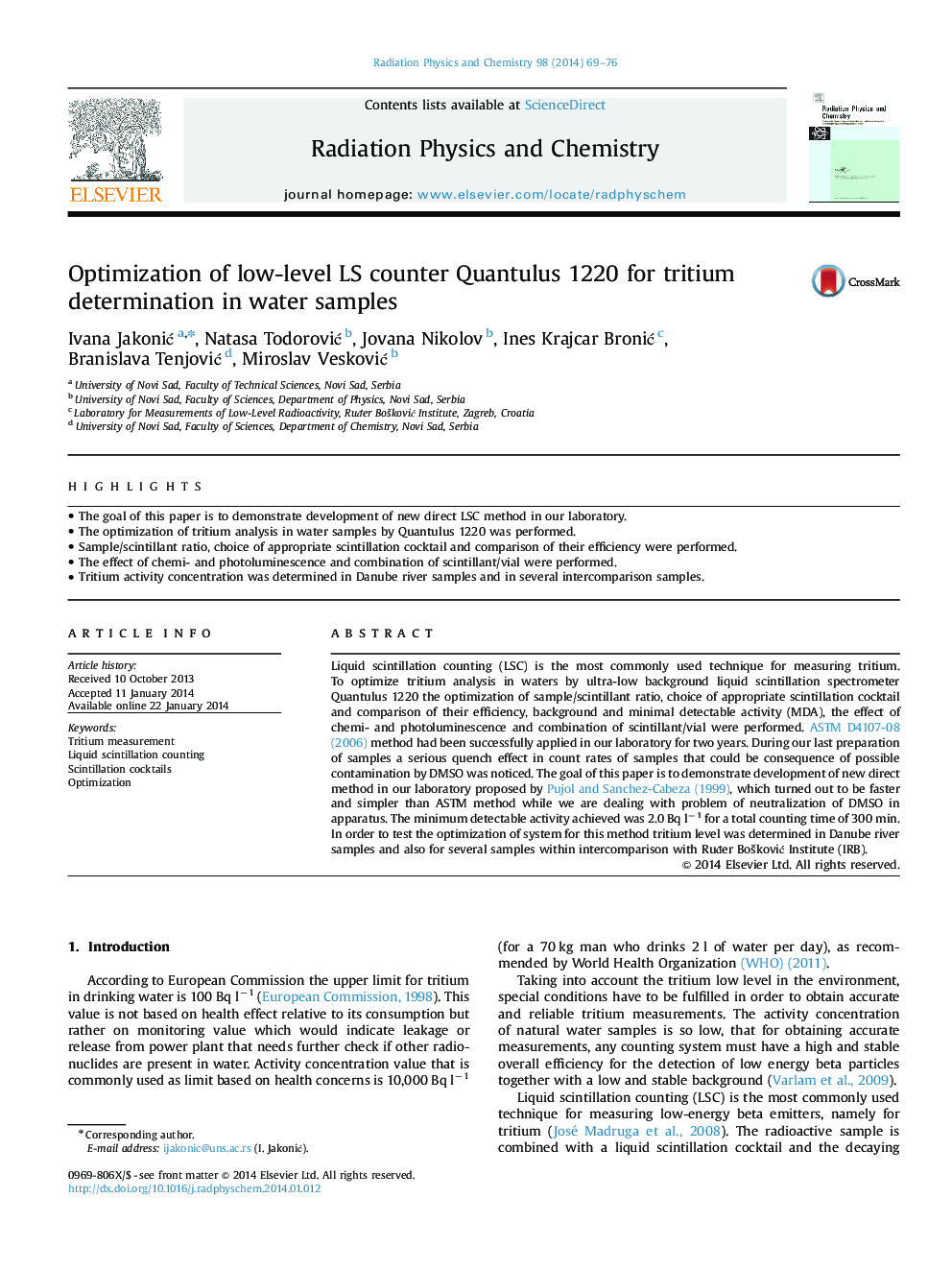| Article ID | Journal | Published Year | Pages | File Type |
|---|---|---|---|---|
| 1886110 | Radiation Physics and Chemistry | 2014 | 8 Pages |
•The goal of this paper is to demonstrate development of new direct LSC method in our laboratory.•The optimization of tritium analysis in water samples by Quantulus 1220 was performed.•Sample/scintillant ratio, choice of appropriate scintillation cocktail and comparison of their efficiency were performed.•The effect of chemi- and photoluminescence and combination of scintillant/vial were performed.•Tritium activity concentration was determined in Danube river samples and in several intercomparison samples.
Liquid scintillation counting (LSC) is the most commonly used technique for measuring tritium. To optimize tritium analysis in waters by ultra-low background liquid scintillation spectrometer Quantulus 1220 the optimization of sample/scintillant ratio, choice of appropriate scintillation cocktail and comparison of their efficiency, background and minimal detectable activity (MDA), the effect of chemi- and photoluminescence and combination of scintillant/vial were performed. ASTM D4107-08 (2006) method had been successfully applied in our laboratory for two years. During our last preparation of samples a serious quench effect in count rates of samples that could be consequence of possible contamination by DMSO was noticed. The goal of this paper is to demonstrate development of new direct method in our laboratory proposed by Pujol and Sanchez-Cabeza (1999), which turned out to be faster and simpler than ASTM method while we are dealing with problem of neutralization of DMSO in apparatus. The minimum detectable activity achieved was 2.0 Bq l−1 for a total counting time of 300 min. In order to test the optimization of system for this method tritium level was determined in Danube river samples and also for several samples within intercomparison with Ruđer Bošković Institute (IRB).
